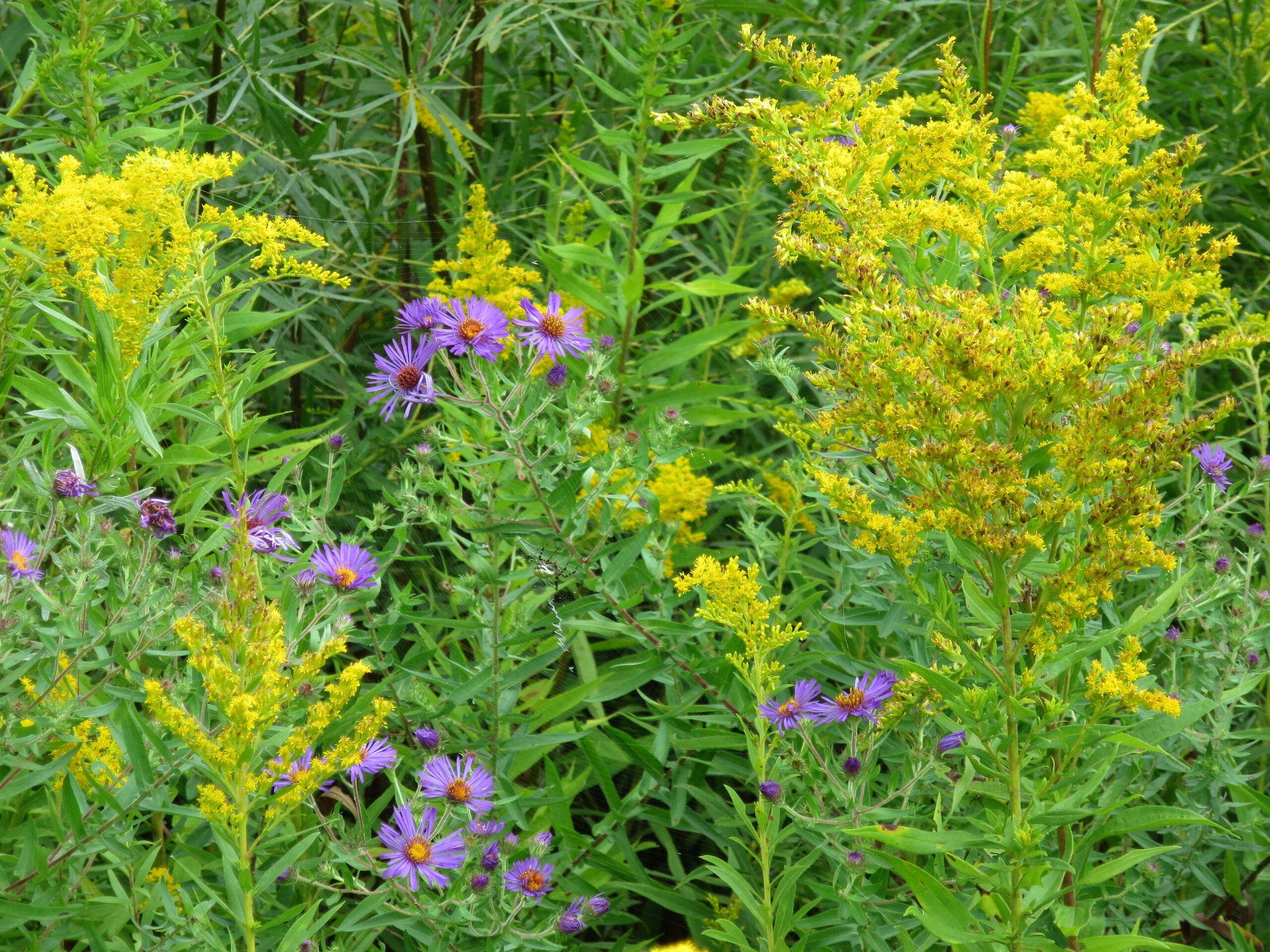Meadows and Prairies
Meadows and prairies are warm, sunny habitats brimming with a variety of plants and wildlife. They provide shelter, nesting sites, and food for birds, pollinators, and other wildlife. They also play an important role in storing carbon and protecting soil from wind and water erosion.
Tallgrass Prairies
Prairies are ecosystems made up of deep-rooted native grasses and wildflowers that are able to withstand poor growing conditions and periodic grazing. They differ from meadows in that they arise in areas where limiting factors naturally discourage the growth of trees. Thus, a prairie is a climax community and, as such, once established, will remain as a long-lived ecosystem for many years.
One difference between a prairie and a meadow is that prairies are maintained primarily by fire to regenerate herbaceous vegetation and control woody and other non-prairie plants. Controlled burns are used to preserve prairie health, allowing it to thrive. Historically, these burns were carried out by the Indigenous people in the area.
Another difference between the two ecosystems is the ratio of grasses to wildflowers. Prairies have a higher grass content, often 70% grasses and 30% wildflowers. This ratio is ideal for grassland birds. Unlike many non-native pasture grasses, the sturdy stems of prairie grasses remain standing throughout winter. These stems provide cover in early spring for ground-nesting birds, such as Eastern Meadowlark and Bobolink, both of which are species at risk.
Prairie grasses can also be used as forage, providing high quality, relatively inexpensive feed for livestock.
Meadows
In contrast to long-lived prairies, meadows are temporary habitats and form as a result of an environmental disturbance. Newly exposed soil is quickly colonized by sun-loving flowers and grasses to create a meadow. These transitional communities will eventually develop into forests through the process of succession.
The most familiar type of meadow is the old field meadow, commonly found on abandoned agricultural land, overgrown pastures, and rural roadsides and often dominated by goldenrods and asters. Without repeated disruption, a meadow is fleeting. Within a few years, tree and shrubs will once again dominate and eventually the meadow will disappear. Occasional mowing can provide the interference that keeps a meadow flourishing and clear of encroaching woody species.
Meadows usually contain 70% wildflowers and 30% grasses. Because meadows have a higher percentage of flowers, they are ideal for providing nectar for pollinators, such as our native bees and butterflies.
Both meadows and prairies are quickly vanishing on our landscape as they are being replaced with farm fields and human development. A variety of plants and wildlife rely on us to preserve these important habitats.

Asters and Goldenrods in Meadow
To learn more, please refer to these facts sheets on the Upper Thames River Conservation Authority (UTRCA) website:
- Tallgrass Prairies on the Farm
- Tallgrass Prairie Plant Species Native to the UTRCA Watershed
- Native Grass Species Appropriate for Restoration Projects
Contact: Brenda Gallagher, Forestry Technician

